
Antananarivo: The Heartbeat of Madagascar
Discover Antananarivo, Madagascar's capital, where history, culture, and nature converge. From colonial architecture to vibrant markets and unique wildlife, Tana has it all.
Antananarivo, affectionately known as 'Tana,' is the vibrant capital of Madagascar. Nestled on the island's central highlands, this bustling city is a fusion of the old and the new. From its French colonial architecture to the lively markets, Tana offers a unique blend of cultures and traditions that captivate every visitor. Venture through the narrow, cobbled streets of the city's historic district to discover charming houses painted in pastel hues. The Royal Hill of Ambohimanga, a UNESCO World Heritage site, provides a glimpse into the city's royal past and offers panoramic views that stretch across the lush landscapes. The Queen's Palace, or Rova, stands as a testament to Antananarivo's regal history and is a must-visit for history enthusiasts. Antananarivo is also a gateway to Madagascar's incredible biodiversity. Nearby parks and reserves, such as the Lemurs' Park, allow tourists to experience the island's unique wildlife. The bustling Analakely Market, with its array of local crafts and fresh produce, provides an authentic taste of Malagasy life. Whether you're exploring the city's vibrant neighborhoods or indulging in local cuisine, Antananarivo promises an unforgettable experience.
Local tips in Antananarivo
- Visit the Royal Hill of Ambohimanga early in the morning to avoid crowds.
- Use local taxis, known as 'taxi-be,' for affordable and authentic city travel.
- Learn a few basic Malagasy phrases to connect better with the locals.
- Carry small denominations of the local currency, Ariary, for market purchases.
- Try the local street food, but ensure it is from a reputable vendor for safety.
- Be cautious of pickpockets in crowded areas like markets and bus stations.
Neighbourhoods in Antananarivo
Antananarivo: The Heartbeat of Madagascar
Antananarivo, affectionately known as 'Tana,' is the vibrant capital of Madagascar. Nestled on the island's central highlands, this bustling city is a fusion of the old and the new. From its French colonial architecture to the lively markets, Tana offers a unique blend of cultures and traditions that captivate every visitor. Venture through the narrow, cobbled streets of the city's historic district to discover charming houses painted in pastel hues. The Royal Hill of Ambohimanga, a UNESCO World Heritage site, provides a glimpse into the city's royal past and offers panoramic views that stretch across the lush landscapes. The Queen's Palace, or Rova, stands as a testament to Antananarivo's regal history and is a must-visit for history enthusiasts. Antananarivo is also a gateway to Madagascar's incredible biodiversity. Nearby parks and reserves, such as the Lemurs' Park, allow tourists to experience the island's unique wildlife. The bustling Analakely Market, with its array of local crafts and fresh produce, provides an authentic taste of Malagasy life. Whether you're exploring the city's vibrant neighborhoods or indulging in local cuisine, Antananarivo promises an unforgettable experience.
When is the best time to go to Antananarivo?
Iconic landmarks you can’t miss
Tsimbazaza Zoo and Botanical Gardens
Discover the rich biodiversity and serene beauty of Tsimbazaza Zoo and Botanical Gardens in Antananarivo, a perfect blend of wildlife and nature.

Queen's Palace
Explore the Queen's Palace, a stunning heritage museum in Antananarivo, showcasing Madagascar's royal history and breathtaking views.
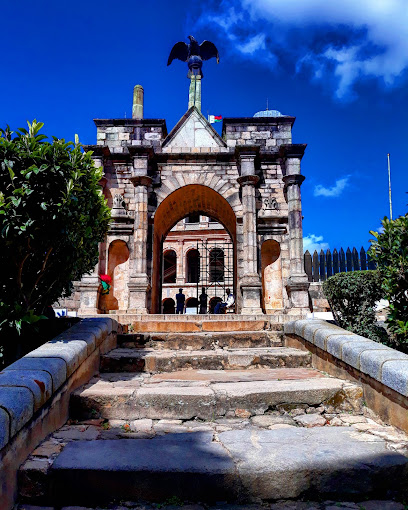
Analakely Market
Explore Analakely Market in Antananarivo for a vibrant experience filled with local culture, unique crafts, and delicious Malagasy cuisine.
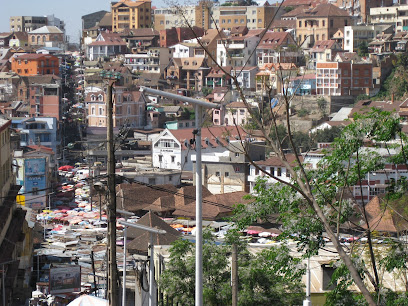
Rovan' Ambohimanga
Explore the rich history and stunning architecture of Rovan' Ambohimanga, a UNESCO World Heritage Site near Antananarivo, Madagascar.
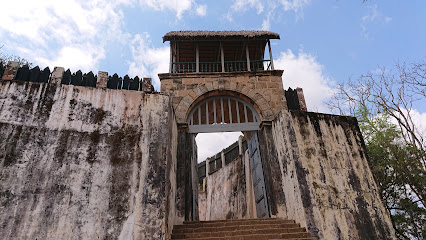
La Plantation
Experience the authentic flavors of Madagascar at La Plantation, where traditional cuisine meets a warm and inviting atmosphere in Antananarivo.
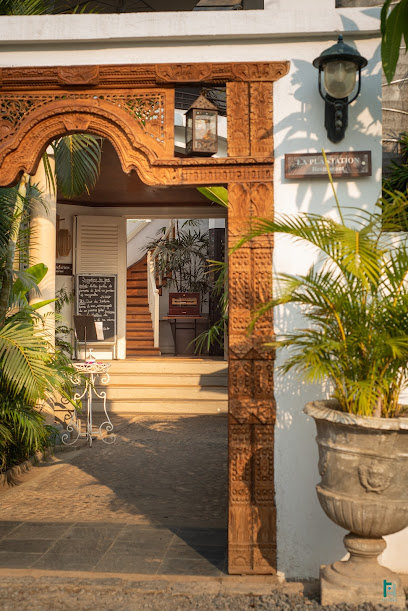
Lisy Art Gallery
Explore the vibrant world of Malagasy art at Lisy Art Gallery, where culture and creativity intertwine in the heart of Antananarivo.

Waterfront Food Court
Experience the vibrant flavors of Madagascar at the Waterfront Food Court, where local and international cuisines come together in a lively setting.
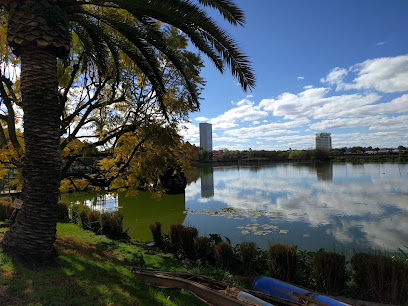
Madagascar Photography Museum
Discover the artistic brilliance of Madagascar through captivating photography at the Madagascar Photography Museum in Antananarivo.
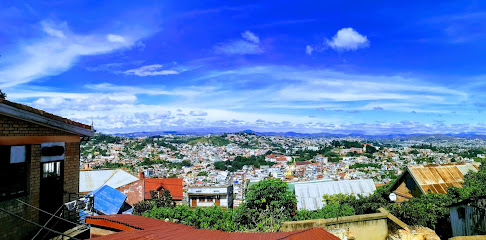
Café du Musée
Discover the flavors of Madagascar at Café du Musée, a culinary gem in Antananarivo, blending local and international cuisine in a charming setting.
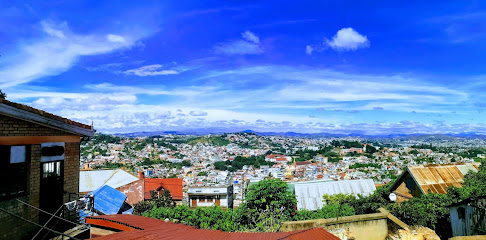
L'Oriental Ivandry
Experience the authentic taste of Lebanon at L'Oriental Ivandry, a vibrant Mediterranean restaurant in Antananarivo with a diverse menu and inviting ambiance.
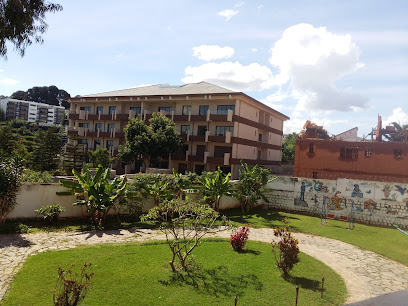
Marais Restaurant Madagascar
Experience the perfect blend of haute French cuisine and Madagascar's local flavors at Marais Restaurant in Antananarivo.
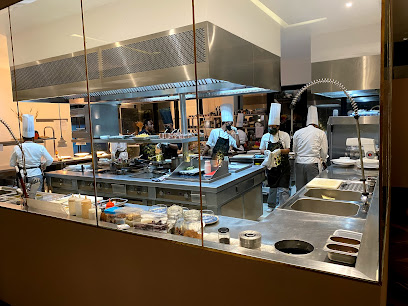
Le Palladio's II
Discover the authentic taste of Italy at Le Palladio's II in Antananarivo, where delicious pizzas and creamy ice creams create a perfect dining experience.
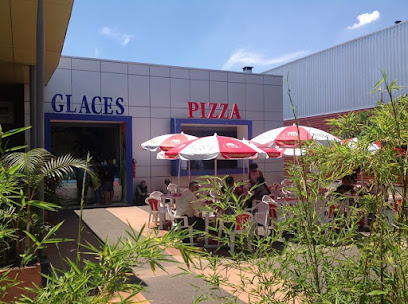
Cathedrale catholique d Andohalo
Explore the architectural beauty and spiritual significance of the Cathedrale catholique d'Andohalo in Antananarivo, Madagascar's stunning cultural landmark.
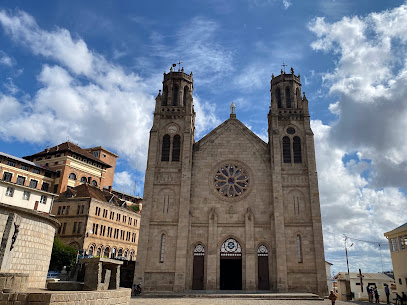
Nosy Manga
Discover the tranquility and comfort of Nosy Manga, a charming hotel in the heart of Antananarivo, perfect for tourists seeking relaxation and adventure.
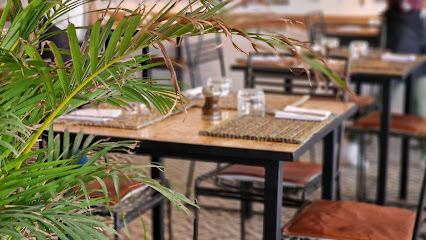
Cinepax Madagascar
Experience the best of cinema at Cinepax Madagascar, where modern facilities meet the vibrant culture of Antananarivo's film scene.
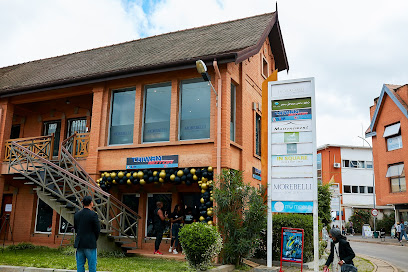
Unmissable attractions to see
Queen's Palace
Explore Madagascar's royal heritage at the iconic Queen's Palace, a stunning heritage museum in Antananarivo with breathtaking views and rich history.

Lemurs Park
Explore Lemurs Park, a sanctuary in Madagascar where you can encounter unique wildlife and support conservation efforts in a stunning natural setting.

Tsimbazaza Zoo and Botanical Gardens
Discover the rich biodiversity at Tsimbazaza Zoo and Botanical Gardens, a unique blend of wildlife and botanical beauty in Antananarivo, Madagascar.
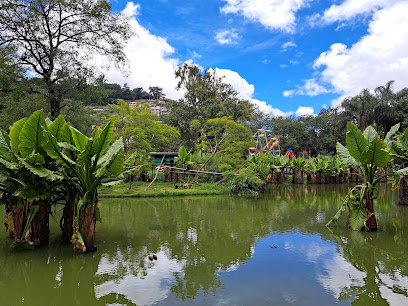
Lemurs Park
Explore the enchanting Lemurs Park, a vital conservation area in Madagascar, dedicated to protecting the island's beloved lemurs and their habitats.
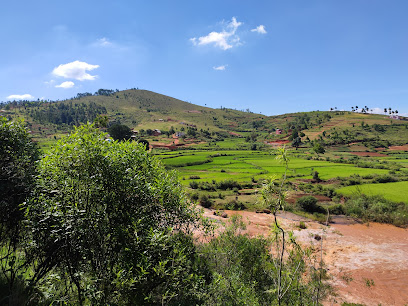
Analakely Market
Explore the lively Analakely Market in Antananarivo, a vibrant hub of culture, crafts, and culinary delights in Madagascar.
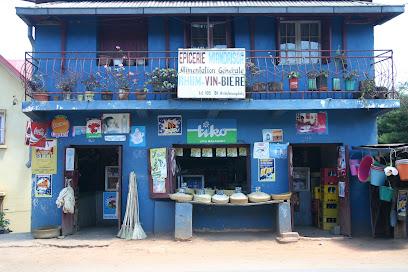
Réserve Peyrieras Madagascar Exotic
Discover Madagascar's unique biodiversity at Réserve Peyrieras Madagascar Exotic, where reptiles, lemurs, and stunning flora await your exploration.
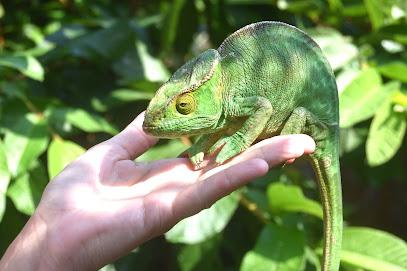
Lisy Art Gallery
Discover the vibrant art scene of Madagascar at Lisy Art Gallery, a cultural gem in Antananarivo showcasing local creativity and heritage.
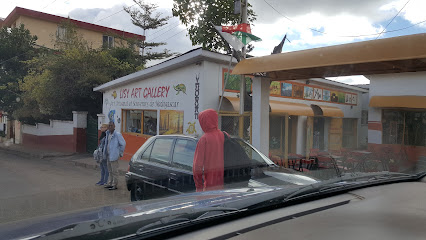
Madagascar Photography Museum
Explore Madagascar's rich culture and breathtaking landscapes through stunning photography at the Madagascar Photography Museum in Antananarivo.
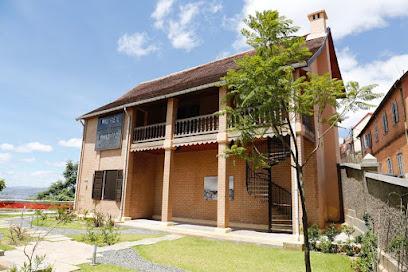
Croc Farm Conservatoire Botanique de Madagascar
Explore the lush beauty of Croc Farm Conservatoire Botanique de Madagascar, a sanctuary for wildlife and a showcase of Madagascar's rich flora.
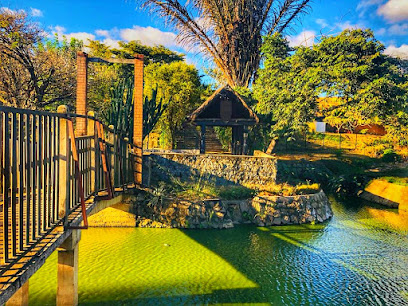
Cathedral of the Immaculate Conception Andohalo
Explore the Cathedral of the Immaculate Conception in Antananarivo, a stunning blend of architectural beauty and rich historical significance.
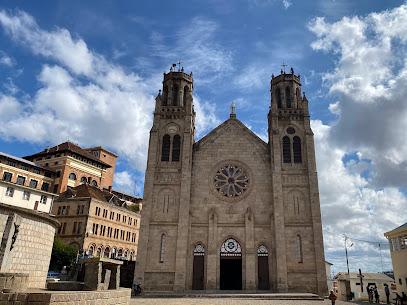
Andafiavaratra Palace
Discover the grandeur of Madagascar's royal heritage at Andafiavaratra Palace, a captivating museum in Antananarivo showcasing the nation's rich history.
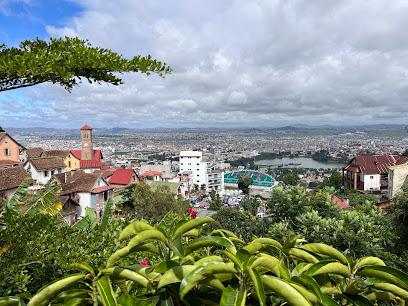
Monument de l’Ange Noir
Discover the Monument de l’Ange Noir, a historical landmark in Antananarivo, showcasing Madagascar's rich cultural heritage and vibrant local life.

Is´art Galerie
Discover Madagascar's vibrant art scene at Is'art Galerie, where local talent and cultural heritage come together in Antananarivo.
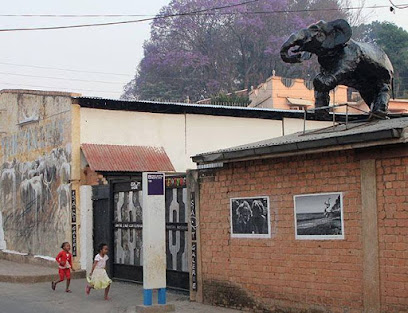
Batou Beach
Experience the vibrant atmosphere and stunning views of Batou Beach in Antananarivo, Madagascar - a perfect blend of relaxation and adventure.
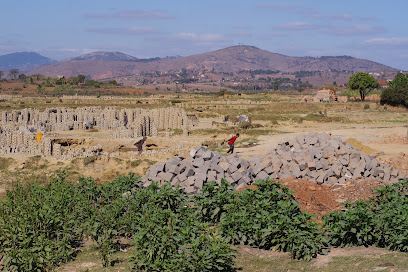
Ambohijatovo Garden
Explore the serene beauty of Ambohijatovo Garden, a peaceful retreat in Antananarivo, perfect for relaxation and nature appreciation.
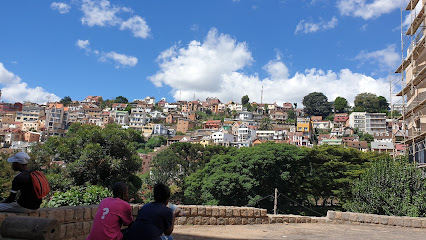
Essential places to dine
Sakamanga Hôtel
Experience the heart of Madagascar at Sakamanga Hôtel: where culinary delights meet cultural charm in Antananarivo.
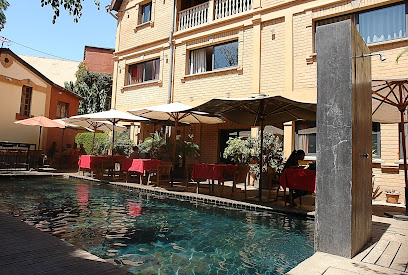
Le Louvre Hotel & Spa
Experience luxury and comfort at Le Louvre Hotel & Spa in Antananarivo - where culture meets elegance.

Relais des Plateaux Hotel & Spa
Experience unparalleled luxury at Relais des Plateaux Hotel & Spa in Madagascar—where relaxation meets sophistication amidst stunning landscapes.
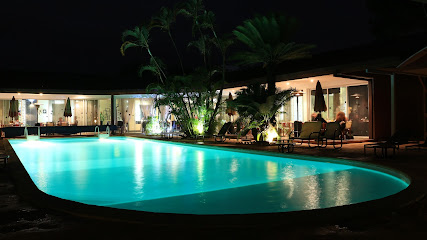
Nerone Ristorante Italiano (Madagascar)
Experience authentic Italian cuisine at Nerone Ristorante Italiano in Antananarivo - where tradition meets local flavor.
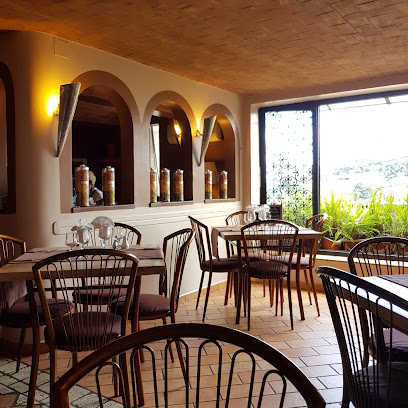
Le Chalet des Roses
Discover culinary excellence at Le Chalet des Roses in Antananarivo – where local flavors meet international cuisine in an inviting atmosphere.
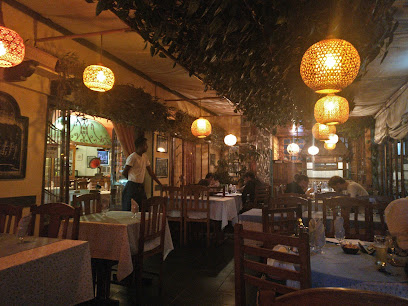
Le Carnivore - Restaurant Bar Lounge
Experience the vibrant flavors of Madagascar at Le Carnivore – Antananarivo's premier restaurant bar lounge offering exquisite cuisine and lively ambiance.
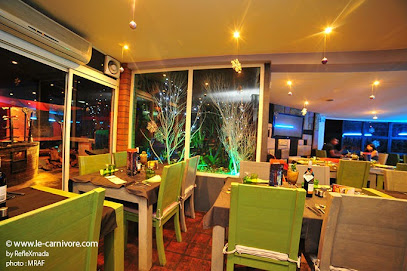
Restaurant Le CITIZEN
Experience authentic Malagasy cuisine in the heart of Antananarivo at Restaurant Le CITIZEN - where flavor meets tradition.
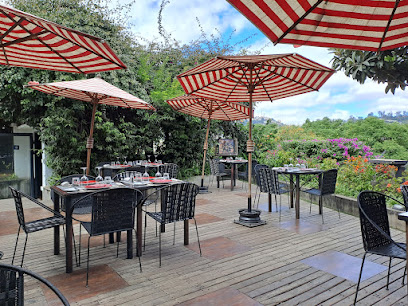
Le petit verdot
Discover the elegance of French gastronomy at Le Petit Verdot in Antananarivo – where every dish tells a story.
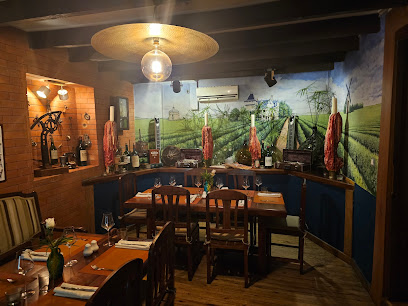
Palissandre Antananarivo
Experience exquisite dining and luxurious relaxation at Palissandre Antananarivo - where Malagasy culture meets modern comfort.

La Plantation
Experience authentic Malagasy cuisine at La Plantation in Antananarivo - where every dish tells a story of tradition and flavor.
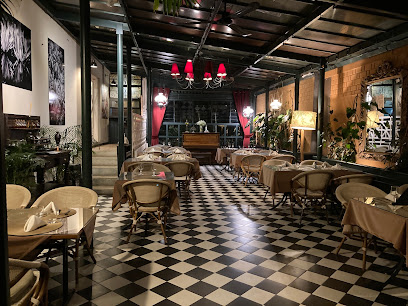
Le Rossini
Discover a taste of Italy at Le Rossini in Antananarivo – where authentic cuisine meets local charm for an unforgettable dining experience.
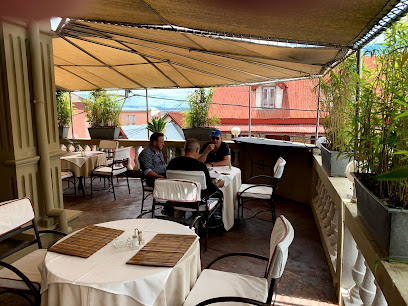
Restaurant Les Artistes
Experience the authentic flavors of Madagascar at Restaurant Les Artistes in Antananarivo - where tradition meets culinary excellence.
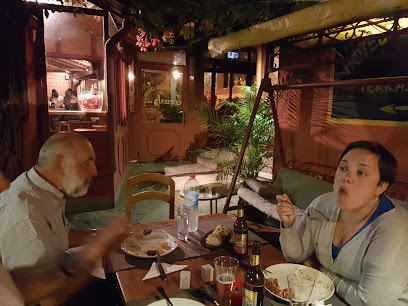
Hotel restaurant Niaouly
Experience exquisite local flavors at Hotel Restaurant Niaouly in Antananarivo – a perfect blend of comfort and culinary delight.
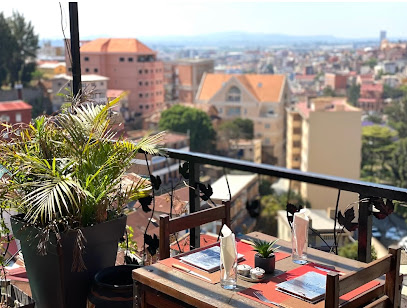
La petite Brasserie
Discover La Petite Brasserie in Antananarivo: where local flavors meet international cuisine in a cozy atmosphere.
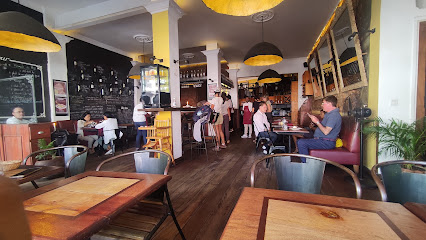
Café du Musée
Discover the flavors of Madagascar at Café du Musée - a charming restaurant offering delicious local cuisine and delightful beverages.
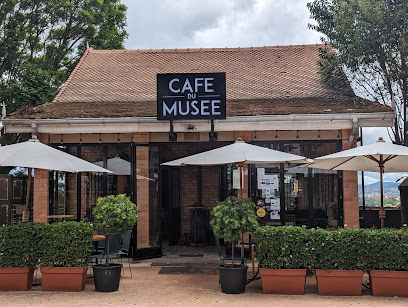
Markets, malls and hidden boutiques
Analakely Market
Discover the vibrant Analakely Market in Antananarivo, where local culture and commerce come alive in a colorful and engaging setting.
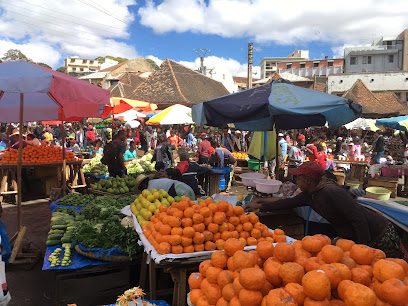
Lisy Art Gallery
Explore the artistic soul of Madagascar at Lisy Art Gallery, featuring unique local art and crafts in the heart of Antananarivo.
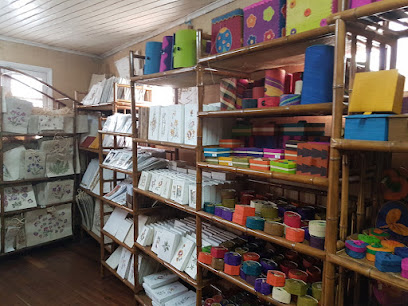
Akoor Digue
Discover the vibrant shopping experience at Akoor Digue in Antananarivo, blending local culture and diverse shopping options.
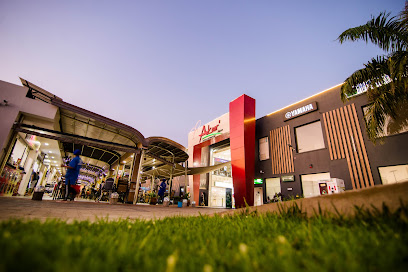
Kudéta Shop
Explore Kudéta Shop in Antananarivo for unique Malagasy souvenirs and handcrafted treasures, showcasing the rich culture and artistry of Madagascar.
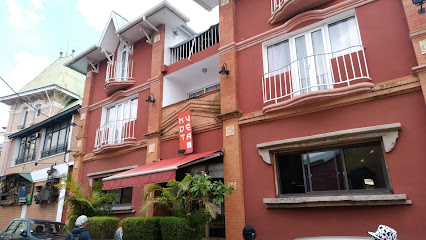
La city Ivandry
Explore La City Ivandry in Antananarivo, a vibrant shopping mall offering diverse retail, dining, and cultural experiences for every tourist.
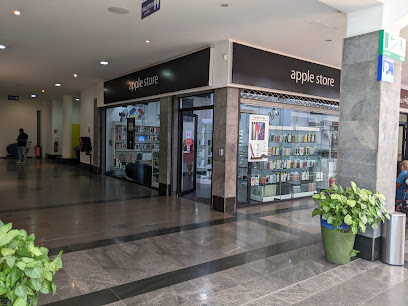
Suprême Center
Discover the hub of technology in Antananarivo at Suprême Center, where innovation meets affordability in a vibrant shopping atmosphere.
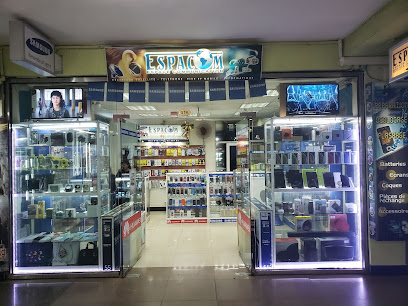
Chocolaterie Robert
Discover the rich flavors of Madagascar at Chocolaterie Robert, where handcrafted chocolates meet exquisite craftsmanship in Antananarivo.
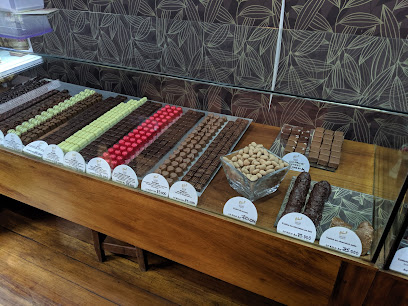
Bijouterie MANJEE JOAILLERIE. BIJOUTERIE DEPUIS 1960
Explore Bijouterie MANJEE JOAILLERIE in Antananarivo for exquisite handcrafted jewelry that reflects the rich culture of Madagascar.
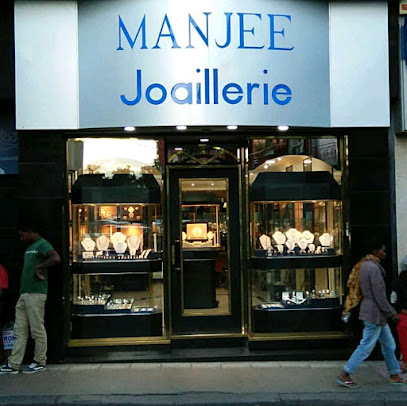
Shoprite Hotel
Experience the heart of Antananarivo at Shoprite Hotel, a supermarket filled with local flavors and goods perfect for every tourist's journey.
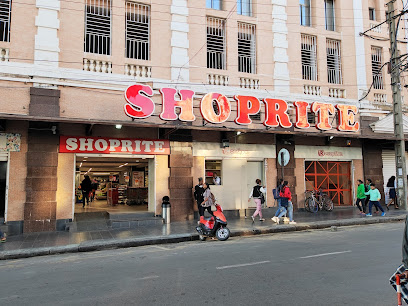
Digue Market
Explore Digue Market, a vibrant shopping hub in Antananarivo, where local culture, crafts, and cuisine come together in a colorful experience.
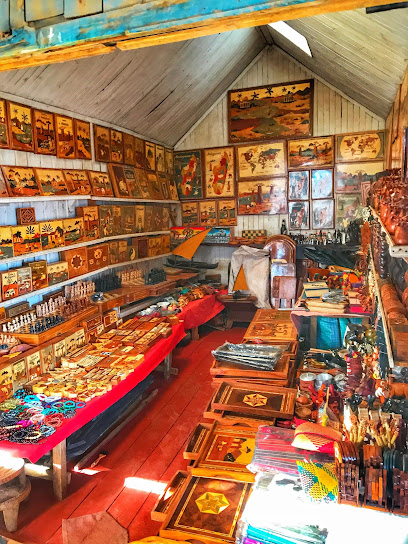
La Ferme de Morarano
Explore the rich flavors of Madagascar at La Ferme de Morarano, a spice store offering exotic spices, local herbs, and culinary treasures.
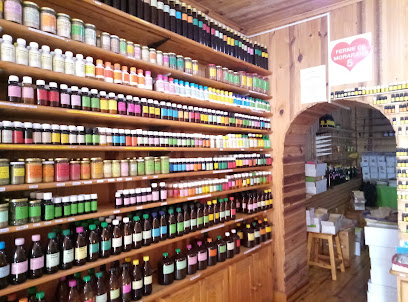
Bonmarche.mg
Explore Bonmarche.mg in Antananarivo for a diverse selection of baby clothing, furniture, and unique home goods, perfect for tourists.

Ô Chaud & Tia Perso
Explore the enchanting world of Malagasy crafts at Ô Chaud & Tia Perso, a delightful gift shop in Antananarivo showcasing local artistry and unique souvenirs.

La Case Verte
Explore La Case Verte, Antananarivo's premier gift shop offering authentic Malagasy crafts, fashion accessories, and home goods for an unforgettable shopping experience.
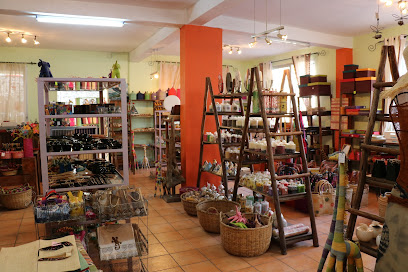
Bazar du Quartier
Discover the authentic flavors and vibrant culture at Bazar du Quartier, Antananarivo's premier grocery store for local delicacies and unique goods.
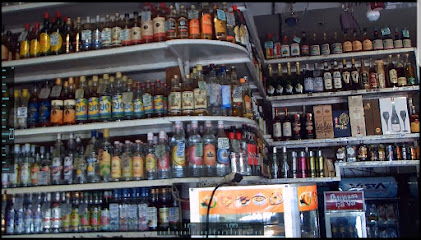
Essential bars & hidden hideouts
Le Carnivore - Restaurant Bar Lounge
Experience the vibrant flavors of Madagascar at Le Carnivore, Antananarivo's premier restaurant bar lounge, where culinary excellence meets lively ambiance.
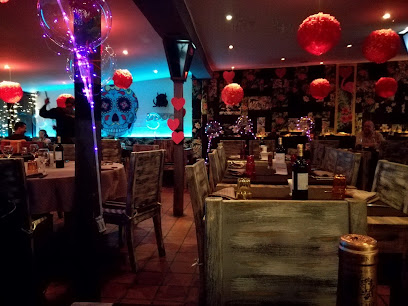
Dzama Cocktail Café Antananarivo
Experience the flavor and vibrancy of Madagascar at Dzama Cocktail Café, the ultimate bar and café in Antananarivo.
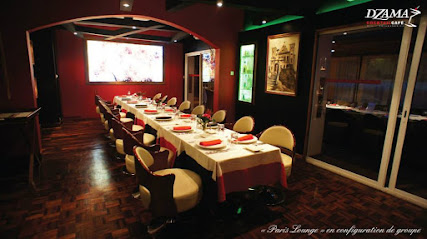
Irish Pub Tana
Discover the heart of Irish culture in Antananarivo at Irish Pub Tana, where traditional dishes meet local charm for an unforgettable dining experience.
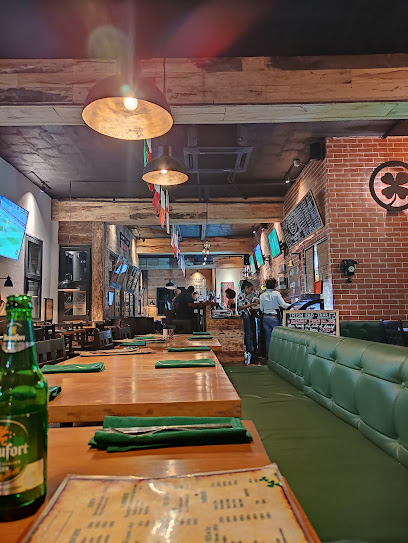
No Comment BAR
Discover the vibrant atmosphere of No Comment BAR in Antananarivo, where delicious tapas and a lively ambiance await.
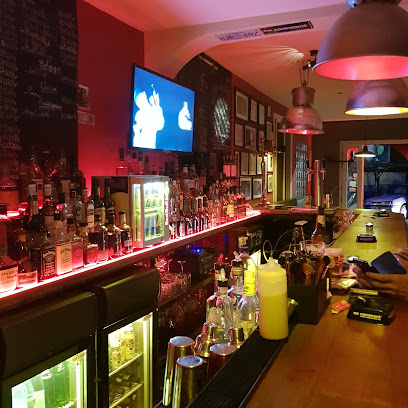
Le Point d'Exclamation Lounge Bar
Experience the vibrant nightlife of Antananarivo at Le Point d'Exclamation Lounge Bar, a cocktail haven with delicious pizza and a lively atmosphere.
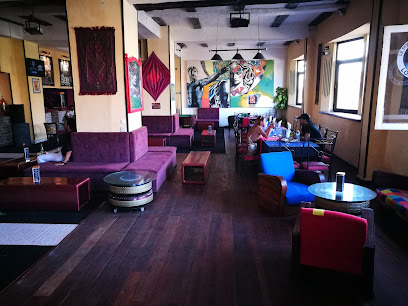
Mojo Bar Tana
Discover the vibrant nightlife of Antananarivo at Mojo Bar Tana, a lively lounge perfect for drinks, dancing, and socializing.
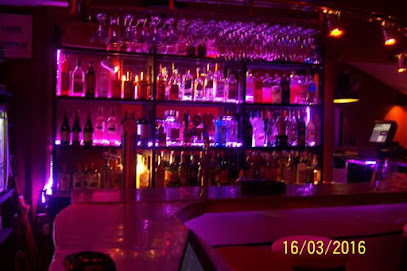
Old 7 bar
Discover the heart of Antananarivo's nightlife at Old 7 Bar, where vibrant drinks and local culture come together for an unforgettable evening.

Manson by Marco
Discover the heart of Antananarivo's nightlife at Manson by Marco, a lively pub offering a warm atmosphere and a diverse drink selection.
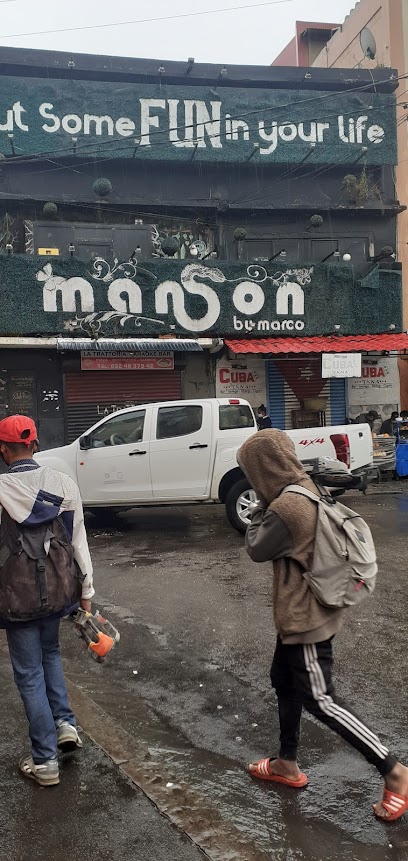
Le Bouddha-Bar antananarivo
Discover the tranquil ambiance and exquisite cocktails at Le Bouddha-Bar, the perfect lounge in Antananarivo for relaxation and socializing.
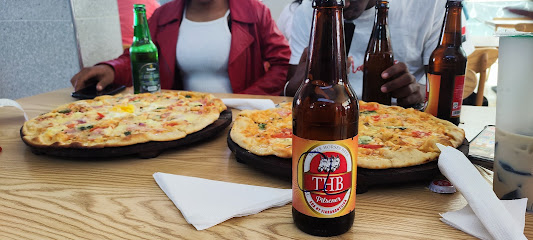
L'Alibi
Experience the vibrant atmosphere of L'Alibi, Antananarivo's premier restaurant and karaoke bar offering a delightful blend of cuisine and entertainment.
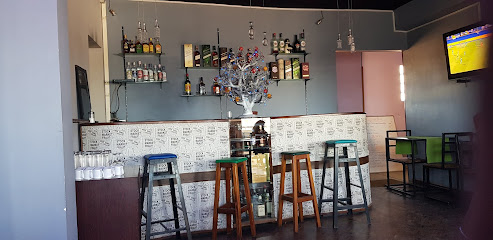
Chez Papa !
Unwind at Chez Papa, a vibrant bar in Antananarivo, where local culture and lively atmosphere come together for an unforgettable night out.
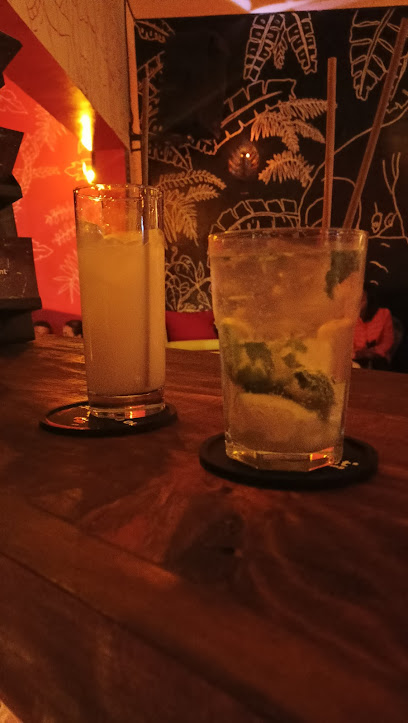
World Citizen Bar
Discover the vibrant atmosphere of World Citizen Bar in Antananarivo, where local charm meets international flair for an unforgettable nightlife experience.

Garage rock café
Experience the lively vibe and unique cocktails at Garage Rock Café in Antananarivo, a hotspot for locals and tourists alike.
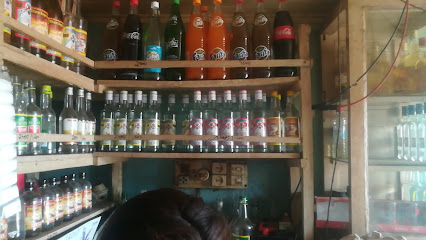
The Lucky Green Bar
Experience the vibrant atmosphere and local flavors at The Lucky Green Bar, a must-visit lounge in Antananarivo for travelers seeking relaxation and connection.
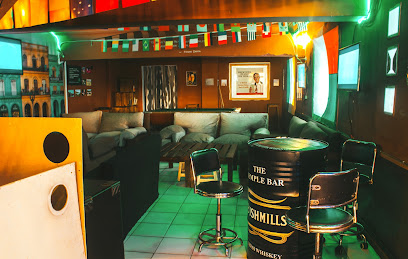
Shaker bar
Discover Shaker Bar in Antananarivo: the perfect spot for cocktails, local vibes, and unforgettable nightlife experiences.

Local Phrases
-
- HelloSalama
[sah-lah-mah] - GoodbyeVeloma
[veh-loh-mah] - YesEny
[eh-ny] - NoTsy
[tsy] - Please/You're welcomeAzafady
[ah-zah-fah-dee] - Thank youMisaotra
[mee-sah-oo-trah] - Excuse me/SorryMiala tsiny
[mee-ah-lah tsee-ny] - How are you?Manao ahoana ianao?
[mah-now ah-wah-nah yah-now] - Fine. And you?Tsara. Ary ianao?
[tsah-rah ah-ree yah-now] - Do you speak English?Miteny Anglisy ianao?
[mee-teh-ny ahng-lee-see yah-now] - I don't understandTsy fantatro
[tsy fahn-tah-tro]
- HelloSalama
-
- I'd like to see the menu, pleaseTe hahita ny menio, azafady
[teh hah-hee-tah nee men-yoo ah-zah-fah-dee] - I don't eat meatTsy misy hena aho
[tsy mee-see hay-nah ah-hoo] - Cheers!Sambatra!
[sahm-bah-trah] - I would like to pay, pleaseTe hahita ny vola, azafady
[teh hah-hee-tah nee voo-lah ah-zah-fah-dee]
- I'd like to see the menu, pleaseTe hahita ny menio, azafady
-
- Help!Fanampiana!
[fah-nahm-pee-ah-nah] - Go away!Mandehana!
[mahn-day-hah-nah] - Call the Police!Manorata ny polisy!
[mah-noh-rah-tah nee poh-lee-see] - Call a doctor!Manorata dokotera!
[mah-noh-rah-tah doh-koh-teh-rah] - I'm lostTsy mahita
[tsy mah-hee-tah] - I'm illMangina
[mahng-ee-nah]
- Help!Fanampiana!
-
- I'd like to buy...Te hahita mivarotra...
[teh hah-hee-tah mee-vah-roh-trah] - I'm just lookingMiandry aho
[my-ahnd-ree ah-hoo] - How much is it?Ohatra no vola?
[oh-ha-trah no voo-lah] - That's too expensiveMahafinaritra loatra izany
[mah-hah-fee-nah-ree-trah loh-ah-trah ee-zah-nih] - Can you lower the price?Azafady ampandroso ny vidiny?
[ah-zah-fah-dee ahm-pahn-droh-soh nee vee-dee-nee]
- I'd like to buy...Te hahita mivarotra...
-
- What time is it?Inona no ora?
[ee-noh-nah noh oh-rah] - It's one o'clockEo iray ora
[eh-oh ee-rah-ee oh-rah] - Half past (10)Efatra sy folo
[eh-fah-trah see foh-loh] - MorningMaraina
[mah-rah-ee-nah] - AfternoonAloatra
[ah-loo-ah-trah] - EveningAlina
[ah-lee-nah] - YesterdayOmaly
[oh-mah-lee] - TodayAnio
[ahn-yoo] - TomorrowRaharaha
[rah-hah-rah-hah] - 1Iray
[ee-rah-ee] - 2Roa
[roo-ah] - 3Telo
[teh-loo] - 4Efatra
[eh-fah-trah] - 5Dimy
[dee-mee] - 6Enina
[eh-nee-nah] - 7Fiteny
[fee-teh-nee] - 8Valo
[vah-loo] - 9Sivy
[see-vy] - 10Folo
[foh-loh]
- What time is it?Inona no ora?
-
- Where's a/the...?Aiza ny...
[ah-ee-zah nee] - What's the address?Inona ny adiresy?
[ee-noh-nah nee ah-dee-reh-see] - Can you show me (on the map)?Azafady averina aho (amin'ny sarita)?
[ah-zah-fah-dee ah-veh-ree-nah ah-hoo ah-meen-nee sah-ree-tah] - When's the next (bus)?Raha henoy ny farany (fiara)?
[rah-hah hay-noy nee fah-rah-nee fee-ah-rah] - A ticket (to ....)Ny fandaniana (hahafaty ...)?
[nee fahn-dah-nee-ah hah-hah-fah-tee]
- Where's a/the...?Aiza ny...
History of Antananarivo
-
Antananarivo, often referred to as 'Tana,' was founded in around 1610 by King Andrianjaka of the Merina people. The city was established on the highest of the twelve sacred hills of Imerina, offering a strategic vantage point. It was named 'Antananarivo,' meaning 'City of the Thousand,' in honor of the thousand soldiers who protected it.
-
In the early 19th century, Antananarivo became the capital of the Merina Kingdom under King Radama I. His reign marked the beginning of significant political and military expansion, as well as efforts to modernize the kingdom by adopting Western education and technology.
-
The French colonized Madagascar in 1896, making Antananarivo the administrative center of the island. The city underwent considerable changes during this period, including the construction of European-style buildings and infrastructure. The French influence is still evident in the city's architecture and urban layout.
-
Madagascar gained independence from France on June 26, 1960. Antananarivo continued to be the political, economic, and cultural hub of the country. The post-colonial period saw efforts to reclaim Malagasy identity, with a focus on promoting local culture and traditions.
-
Antananarivo is home to several significant cultural landmarks, such as the Rova of Antananarivo, also known as the Queen's Palace. This historic complex served as the royal residence of the Merina monarchs and is a symbol of Madagascar's rich heritage. Another notable site is the Andafiavaratra Palace, which houses a museum showcasing royal artifacts.
-
Today, Antananarivo is a bustling metropolis characterized by a blend of traditional Malagasy culture and modern influences. The city is a vibrant center for arts, commerce, and education, attracting visitors with its lively markets, historic sites, and scenic vistas.
Antananarivo Essentials
-
Antananarivo, the capital city of Madagascar, is primarily accessed via Ivato International Airport (TNR), located about 16 kilometers northwest of the city center. There are direct flights from major cities in Europe, Asia, and Africa. Domestic flights from other regions of Madagascar also operate frequently. Once at the airport, travelers can take taxis or pre-arranged hotel shuttles to reach the city.
-
Getting around Antananarivo can be an adventure. Taxis are a common and relatively affordable way to travel. Taxi-be (shared minibuses) are the main form of public transportation and cover various routes across the city, though they can be crowded and less comfortable. Car rentals are available but driving can be challenging due to traffic and road conditions. For short distances, walking is often the best option, especially in central areas.
-
The official currency in Madagascar is the Malagasy Ariary (MGA). Credit cards are accepted in some hotels, restaurants, and larger shops, but it is advisable to carry cash, especially in smaller establishments and markets. ATMs are widely available in Antananarivo, but it's a good idea to withdraw sufficient cash for your needs, as ATMs can sometimes run out of money or be out of service.
-
Antananarivo is generally safe for tourists, but it's important to take standard precautions. Avoid walking alone at night, especially in poorly lit areas. Be cautious in crowded places like markets and bus stations, as pickpocketing can occur. Areas such as Analakely and Isotry have higher crime rates. Always use reputable transportation services and avoid displaying valuables openly.
-
In case of emergency, dial 117 for police assistance and 124 for medical emergencies. Major hospitals in Antananarivo include HJRA Hospital and Polyclinique Ilafy. It is highly recommended to have travel insurance that covers medical emergencies. Pharmacies are available throughout the city for over-the-counter medications.
-
Fashion: Do dress modestly, especially when visiting religious or rural areas. Avoid wearing flashy jewelry. Religion: Do respect local customs and traditions. Remove your shoes and cover your head when entering religious sites. Public Transport: Do be patient and polite when using public transport. Don't eat or drink on public transport. Greetings: Do greet people with a friendly 'Salama' (hello) and a handshake. Eating & Drinking: Do try local foods and accept offers of hospitality. Don't refuse food or drink offerings, as it may be considered impolite.
-
To experience Antananarivo like a local, visit the Analakely market for fresh produce and local goods. Take a stroll around Lac Anosy for a serene escape from the bustling city. Engage with locals, as they are generally friendly and willing to share insights about their culture. Don't miss the Rova of Antananarivo, a historic royal palace offering panoramic views of the city. For an authentic dining experience, try traditional Malagasy cuisine at local eateries.
Trending Landmark in Antananarivo
-
Tsimbazaza Zoo and Botanical Gardens
-
Queen's Palace
-
Analakely Market
-
Rovan' Ambohimanga
-
La Plantation
-
Lisy Art Gallery
-
Waterfront Food Court
-
Madagascar Photography Museum
-
Café du Musée
-
L'Oriental Ivandry
-
Marais Restaurant Madagascar
-
Le Palladio's II
-
Cathedrale catholique d Andohalo
-
Nosy Manga
-
Cinepax Madagascar
Nearby Cities to Antananarivo
-
Things To Do in Andasibe
-
Things To Do in Antsirabe
-
Things To Do in Toamasina
-
Things To Do in Fianarantsoa
-
Things To Do in Manakara
-
Things To Do in Mahajanga
-
Things To Do in Majunga
-
Things To Do in Ifaty
-
Things To Do in Nosy Be
-
Things To Do in Toliara
-
Things To Do in Mandrare River
-
Things To Do in Fort Dauphin
-
Things To Do in Chirongui
-
Things To Do in Bandrele
-
Things To Do in Dembeni















